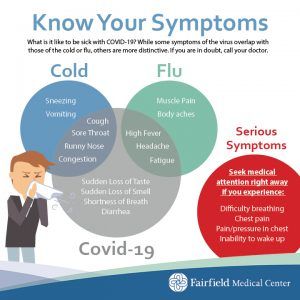Common Cold vs. COVID-19: Know the Difference
In the midst of the COVID-19 pandemic, it’s crucial to be able to distinguish between the common cold and COVID-19 symptoms to ensure proper care and prevention. While both illnesses are respiratory in nature, they vary in severity, transmission, and specific symptoms.
Transmission
One essential aspect in understanding the difference between the common cold and COVID-19 is how they are transmitted. The common cold is primarily spread through contact with infected respiratory secretions, such as coughing, sneezing, or touching contaminated surfaces. COVID-19, on the other hand, is mainly transmitted through respiratory droplets when an infected person coughs, sneezes, or talks. It can also spread by touching contaminated surfaces and then touching the mouth, nose, or eyes.
Severity
The severity of symptoms is another key difference between the common cold and COVID-19. The common cold typically results in mild symptoms, such as a runny or stuffy nose, sneezing, sore throat, and mild cough. In contrast, COVID-19 symptoms can range from mild to severe, with some cases leading to severe respiratory distress, pneumonia, organ failure, or even death.
Specific Symptoms
While there may be some overlapping symptoms, there are specific signs that can help distinguish between the two illnesses. Common cold symptoms often include a runny or stuffy nose, sneezing, sore throat, and mild cough. On the other hand, COVID-19 symptoms may include fever, shortness of breath, persistent cough, loss of taste or smell, fatigue, body aches, and in severe cases, difficulty breathing.
Duration
The duration of illness is another factor that helps differentiate between the common cold and COVID-19. The common cold usually lasts for about 7-10 days, with symptoms gradually improving over time. In contrast, COVID-19 symptoms can last for several weeks, and in severe cases, hospitalization may be required for an extended period.
Testing and Diagnosis
If you suspect you have COVID-19 or the common cold, seeking appropriate testing and diagnosis is essential. COVID-19 testing typically involves a nasal or throat swab to detect the presence of the SARS-CoV-2 virus. Common cold diagnosis is usually based on clinical symptoms and does not require specific testing unless there are concerns of underlying complications.
Prevention
Preventive measures for both the common cold and COVID-19 include practicing good hand hygiene by regularly washing hands with soap and water for at least 20 seconds or using hand sanitizers containing at least 60% alcohol. Wearing masks, maintaining social distancing, and avoiding close contact with sick individuals are also effective prevention strategies against both illnesses.
Conclusion
While both the common cold and COVID-19 are respiratory illnesses, understanding the differences in transmission, severity, specific symptoms, duration, testing, and prevention is crucial. By being able to distinguish between the two, individuals can take appropriate measures to protect themselves and others, thereby contributing to the overall containment of COVID-19.


